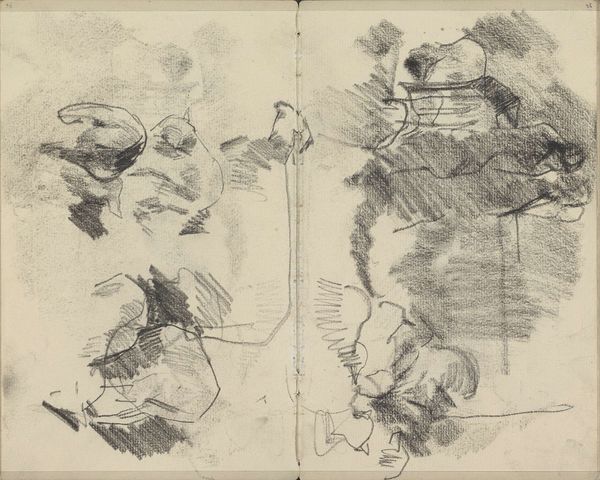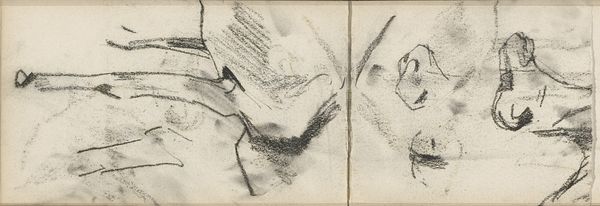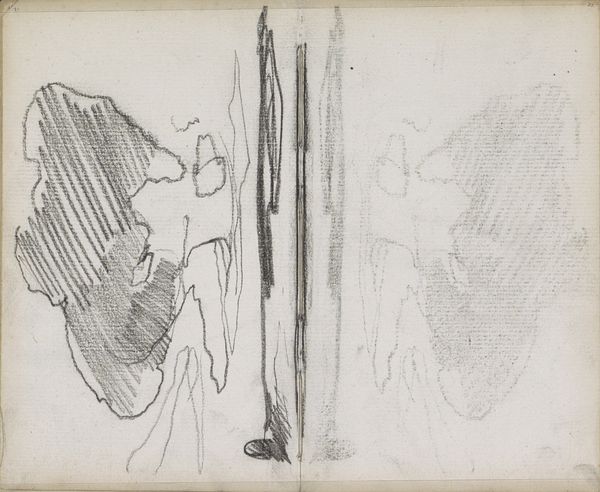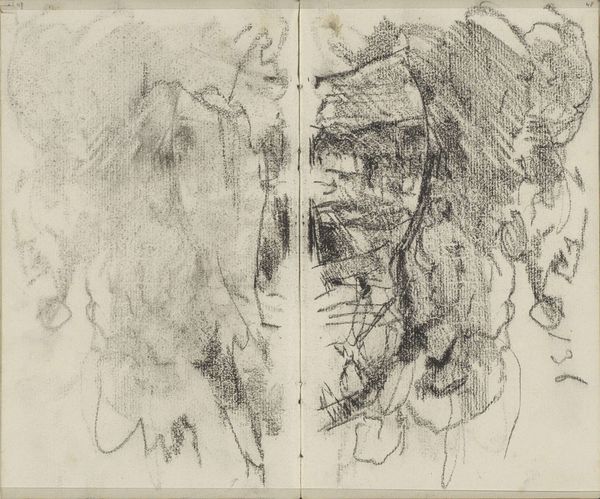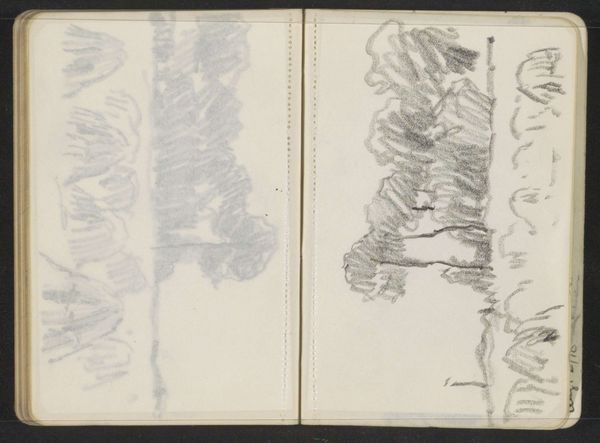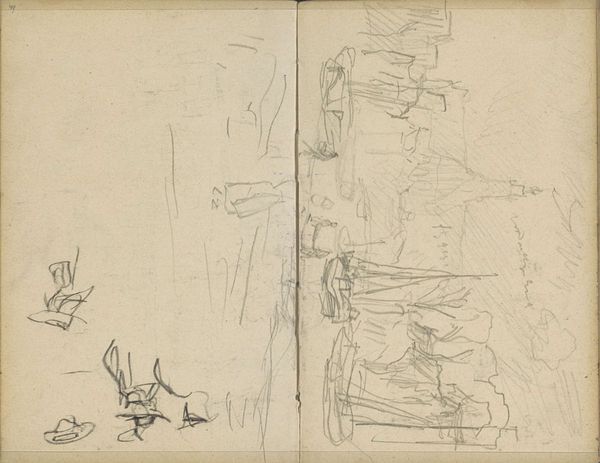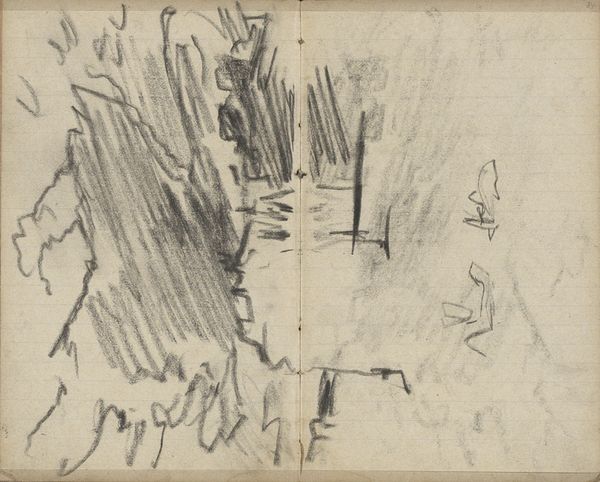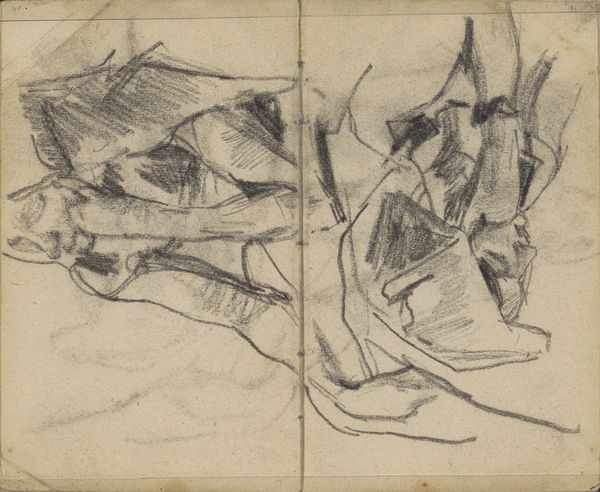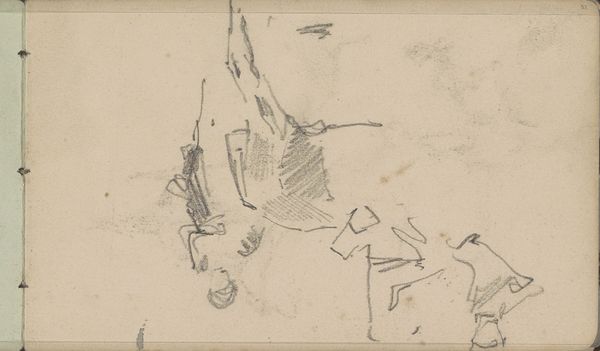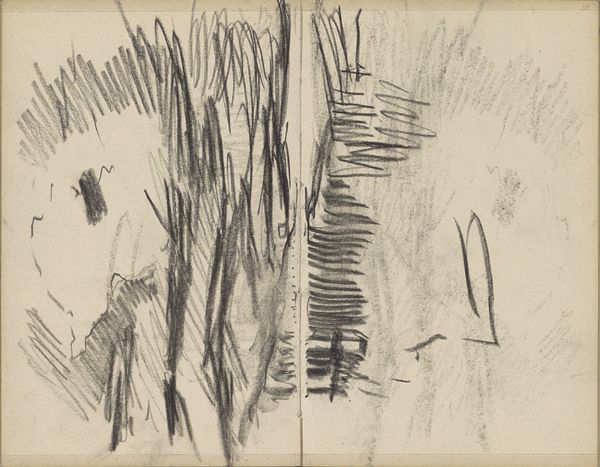
drawing, pencil
#
drawing
#
toned paper
#
light pencil work
#
dutch-golden-age
#
pen sketch
#
pencil sketch
#
landscape
#
personal sketchbook
#
ink drawing experimentation
#
pen-ink sketch
#
pencil
#
pen work
#
sketchbook drawing
#
post-impressionism
#
sketchbook art
Copyright: Rijks Museum: Open Domain
Curator: This is George Hendrik Breitner's "Landschap met een wolkenlucht," or "Landscape with a Cloudy Sky," dating from around 1886 to 1903. It's a drawing made with pencil on toned paper, and comes to us from the Rijksmuseum. Editor: My first thought is somber, almost melancholic. The sketches have a raw, unfinished quality that evokes a certain vulnerability. Curator: Breitner's known for his commitment to portraying the working class and urban scenes in Amsterdam, and here we see an extension of his acute observations of the landscape and everyday ephemera—in what appears to be a personal sketchbook, no less. It begs the question, for whom was Breitner drawing? How were the landscapes he witnessed impacting his mental state and artistic practice? Editor: Exactly! I'm curious about the materiality of the sketchbook itself. The paper tone and pencil work – the labor of physically sketching repeatedly, and how that repetitive motion may affect and mirror society or the artist. What kind of pencil did Breitner use? Was it mass-produced, readily available, or a specialized tool? This can reveal clues about Breitner’s relationship to industrialization. And what socioeconomic background granted access to the paper, if Breitner or someone in his family could obtain and repurpose the used material, and the effects those things have in this artwork’s message. Curator: The sketches display a sensitivity to the light and atmospheric conditions of the Dutch landscape. It's clear that Breitner was captivated by the transient beauty of nature. But the question also then becomes why sketches like this never became finished works. Were these practice, study, or did these ideas of light linger as fully realized concepts only for the artist? Editor: Perhaps these unfinished sketches reflect Breitner’s understanding of landscape within broader societal anxieties. The open, unrefined nature can represent a disruption in the period’s vision of perfect completion; but if this was a society increasingly grappling with social changes and inequality, would the sketch point out those unresolved, “sketchy” elements? Curator: It provides a unique glimpse into the artist's working method and allows us to connect with his vision on a very human scale, stripped of pretense and formal accomplishment. Editor: Ultimately, understanding how everyday materials intersect with societal contexts provides insights into this Dutch Golden Age post-impressionist period. Curator: For me, this quick rendering highlights Breitner's engagement with light in the Dutch landscape. Editor: And for me, thinking about how the materiality can embody that artistic vision is exciting and challenging.
Comments
No comments
Be the first to comment and join the conversation on the ultimate creative platform.

